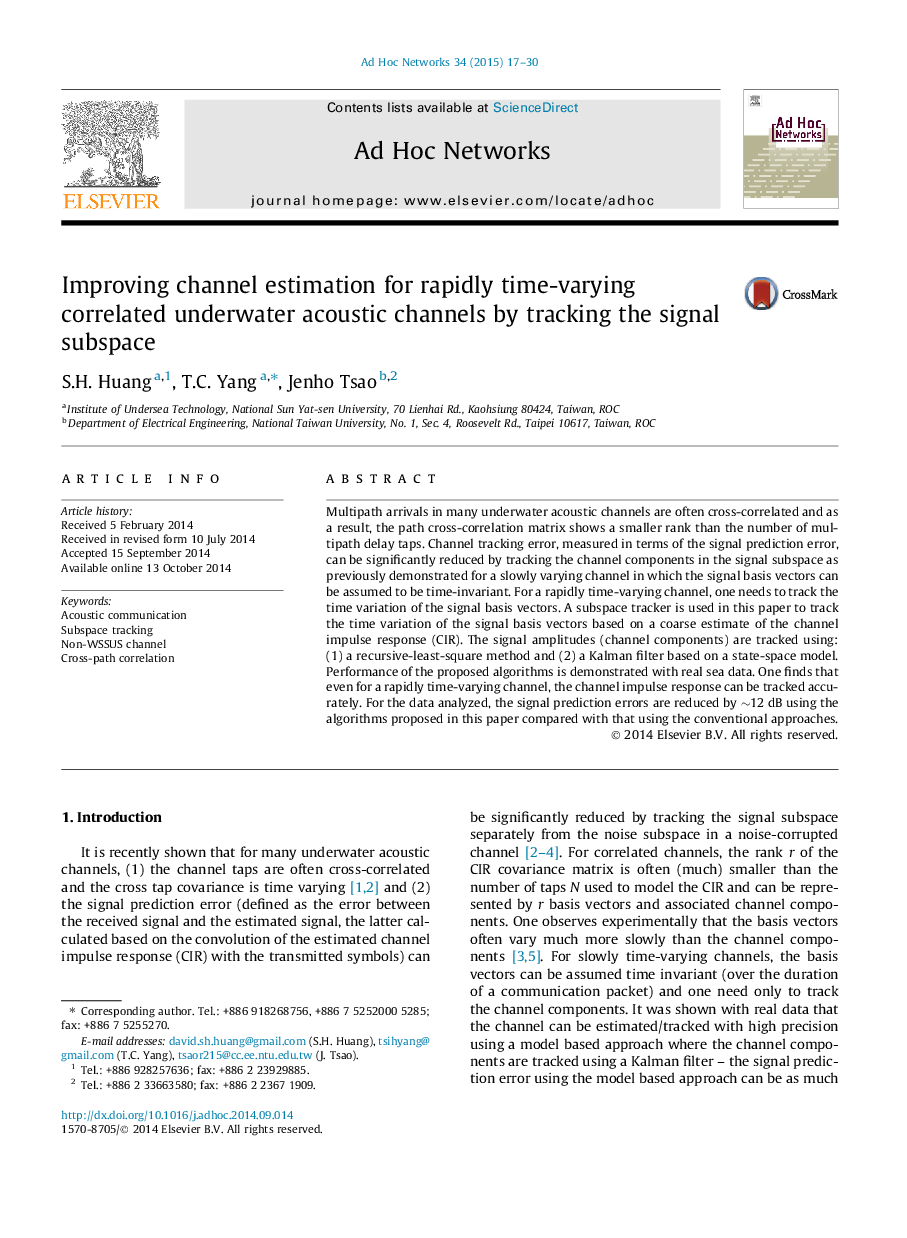| Article ID | Journal | Published Year | Pages | File Type |
|---|---|---|---|---|
| 445598 | Ad Hoc Networks | 2015 | 14 Pages |
Multipath arrivals in many underwater acoustic channels are often cross-correlated and as a result, the path cross-correlation matrix shows a smaller rank than the number of multipath delay taps. Channel tracking error, measured in terms of the signal prediction error, can be significantly reduced by tracking the channel components in the signal subspace as previously demonstrated for a slowly varying channel in which the signal basis vectors can be assumed to be time-invariant. For a rapidly time-varying channel, one needs to track the time variation of the signal basis vectors. A subspace tracker is used in this paper to track the time variation of the signal basis vectors based on a coarse estimate of the channel impulse response (CIR). The signal amplitudes (channel components) are tracked using: (1) a recursive-least-square method and (2) a Kalman filter based on a state-space model. Performance of the proposed algorithms is demonstrated with real sea data. One finds that even for a rapidly time-varying channel, the channel impulse response can be tracked accurately. For the data analyzed, the signal prediction errors are reduced by ∼12 dB using the algorithms proposed in this paper compared with that using the conventional approaches.
